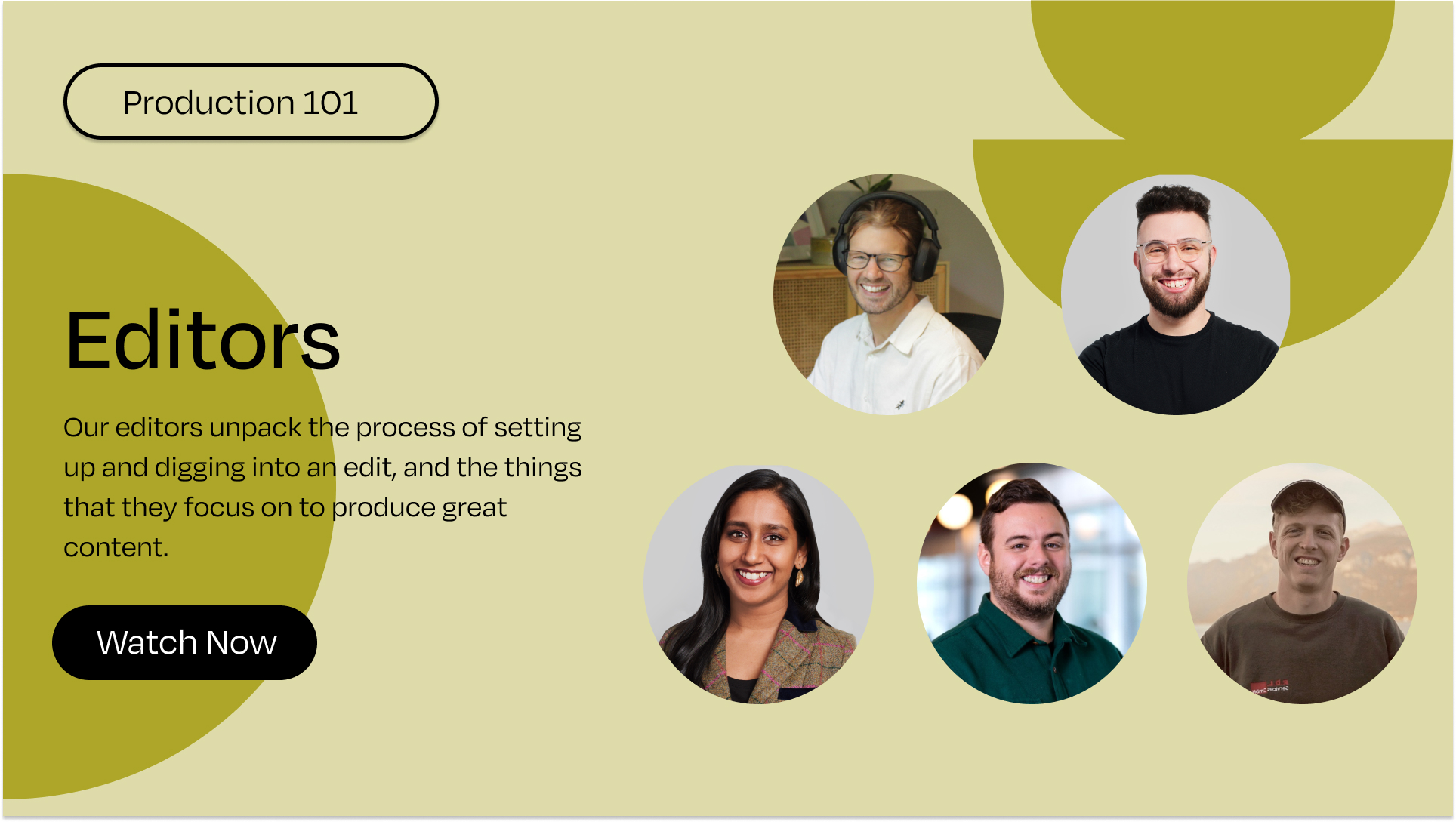Production 101: Post Production
Post-production is where all the pieces come together to craft a compelling story. From organizing footage and selecting the best takes to adding music, graphics, and color grading, every detail is carefully refined. It’s a collaborative process, ensuring the final edit aligns with your vision while keeping the narrative clear and engaging. A well-planned approach leads to a polished, impactful video that delivers your message effectively.
Transcript
This process can be really fun. It involves a lot of creativity and problem-solving. The first thing that we would typically do is ingest all the footage. From there, we may make some proxies to have a smaller working file. This is where we lay our foundation for the edit. A well-organized, well-set-up project will save time in the long run.
So the V1 is where we start with our creative vision put forth to you, and then there's sort of a collaborative dance between you as the client, the producer, and us as the editor, as we go back and forth to make sure everyone's happy, especially you as the client, with that final, final edit. Once you've done all the rushes and you've developed your selects, um, that's when you build the narrative cut.
And a narrative cut is basically the full start-to-end of the video and how all the information is conveyed visually and through audio tot he viewer about what our story is.
It's a lot more intricate of a process than people might think, you know, a lot of tasks are done manually, sifting through all the footage, selecting the best takes, then crafting them together in a way that's both creatively interesting and also narratively clear. When it comes to the bread and butter of a talking heads edit, obviously the most important thing initially is to download and watch all the footage several times over to make sure that you really understand the content and what it's trying to do. And also so that you can fully sort of break down the footage and reassemble it to really sort of cultivate the narrative that you're looking to create within that project.
On a narrative project, the first step is again, always syncing up the footage with the audio. And then again, going through and making selects. Usually in a narrative project, there are multiple takes of each scene. So it's very important to go through and label each take clearly and then kind to know your favorite.
I'm fascinated by the relationship between audio and video and I look to try and explore that within my workflow when I can. So usually when I can, I try to bring in music at the start because it helps inform the sort of pace of the video, the tone of the video and also, it gives me an idea of what sort of visuals I can pair well with that audio to really get the message across.
When we look for stock, we're looking for something that's going to tell the story. That's the most important thing. Secondary to that, we're going to look for color palettes. We're going to look for the patch frames. We're going to look for camera movement and direction. It takes a lot of skill to create a stock edit that tells a story well but also looks engaging and impressive.
Obviously, you want stock footage that is there to support the VO, or the voiceover, and really support the messaging that it's trying to convey. But you also want stock footage that's too on the nose. You want to find abstract and creative ways of expressing what the voiceover is talking about.
The advice I'd have for clients in that situation is if you really have a short turnaround time, make sure you're clear about what you want from your final video right from the start.
If you only have a week to turn around a completed video, and that involves pre-production, shooting, and editing, really, we need to have a clear vision right up front. What is this final video going to look like? And, it's absolutely doable. There's no time for trial and error in fast turnaround videos. We need to know exactly what we're doing and why. That way, we're not second-guessing ourselves when it comes to creative decisions. It's very helpful to know up front what the expectations are and what you're hoping to see in this. Do you want to have a graphical element? Knowing more information just makes our jobs easier.



